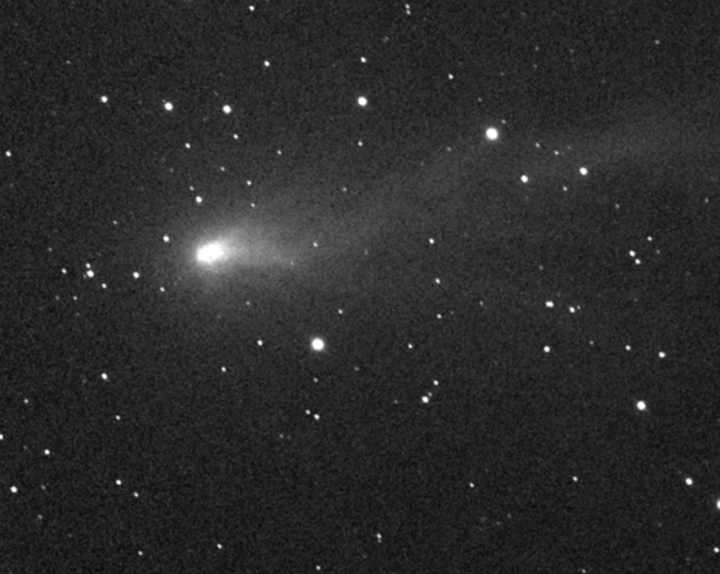
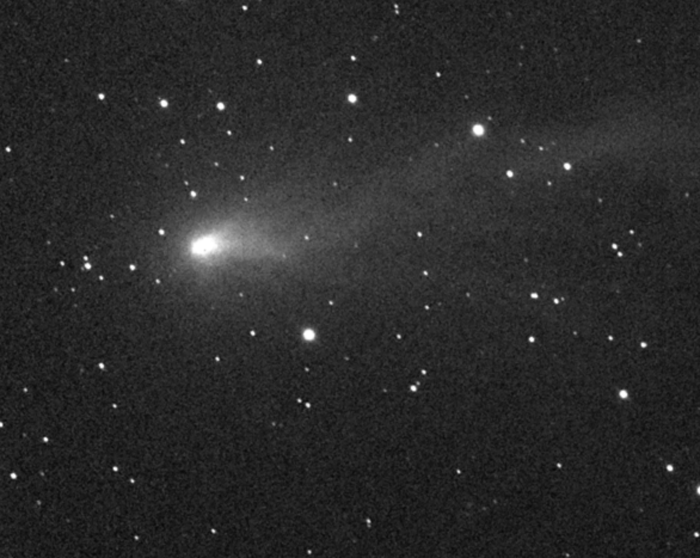
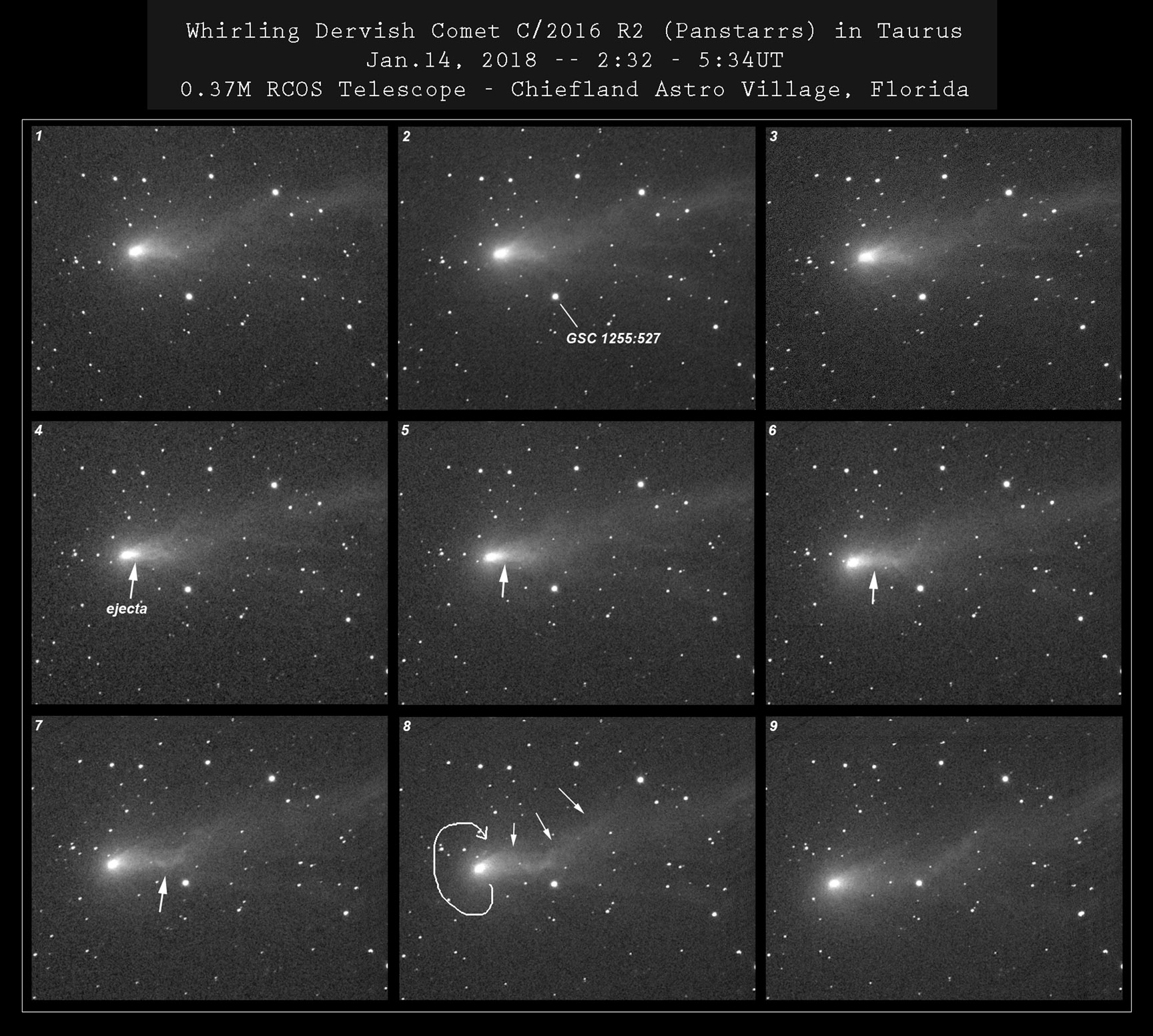
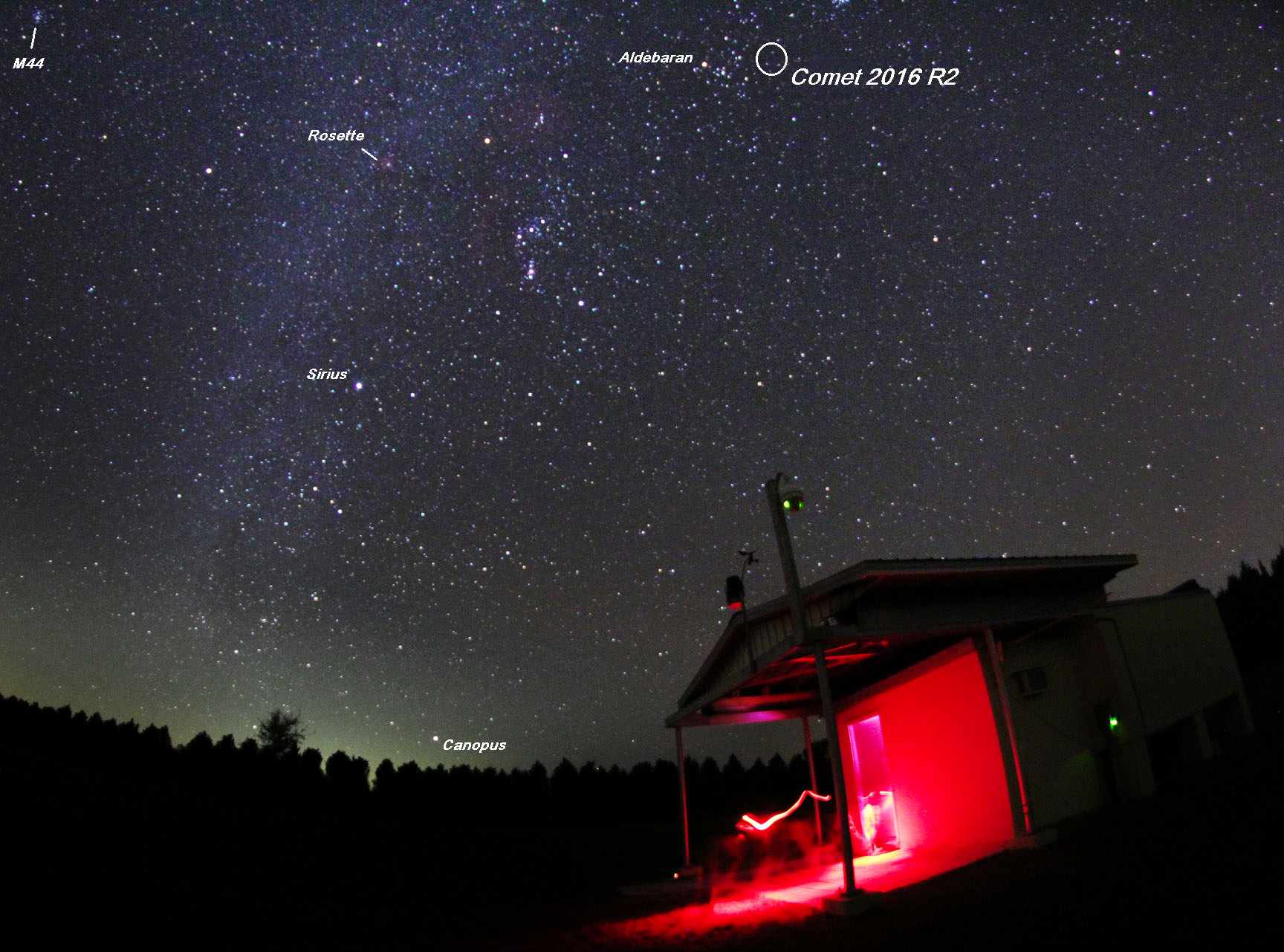
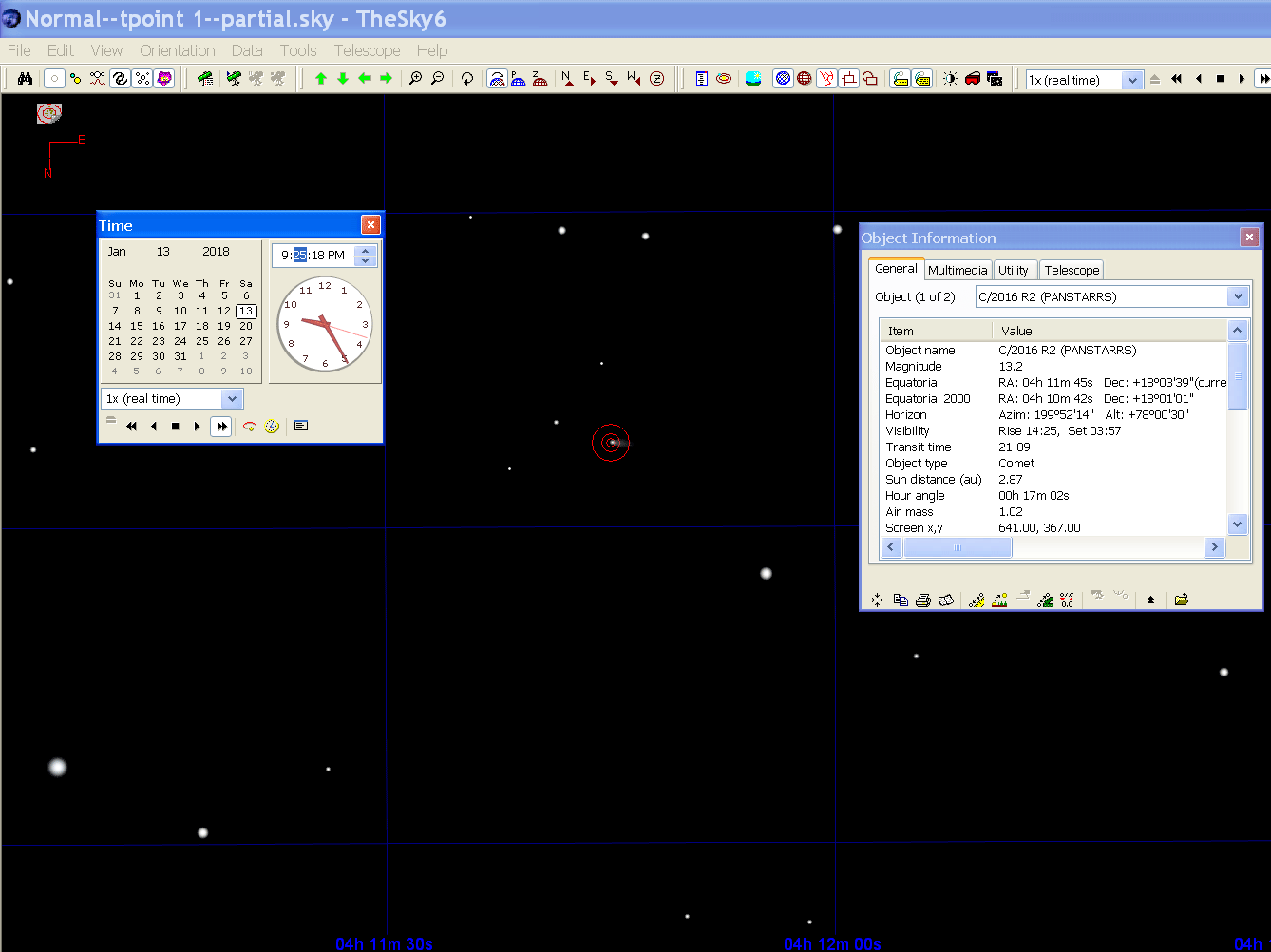
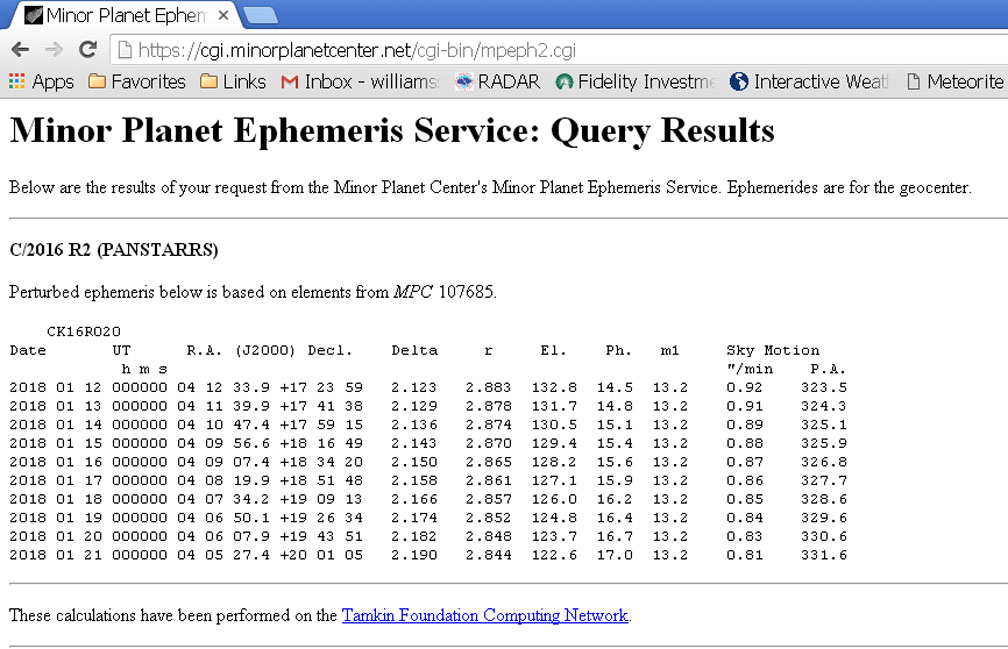
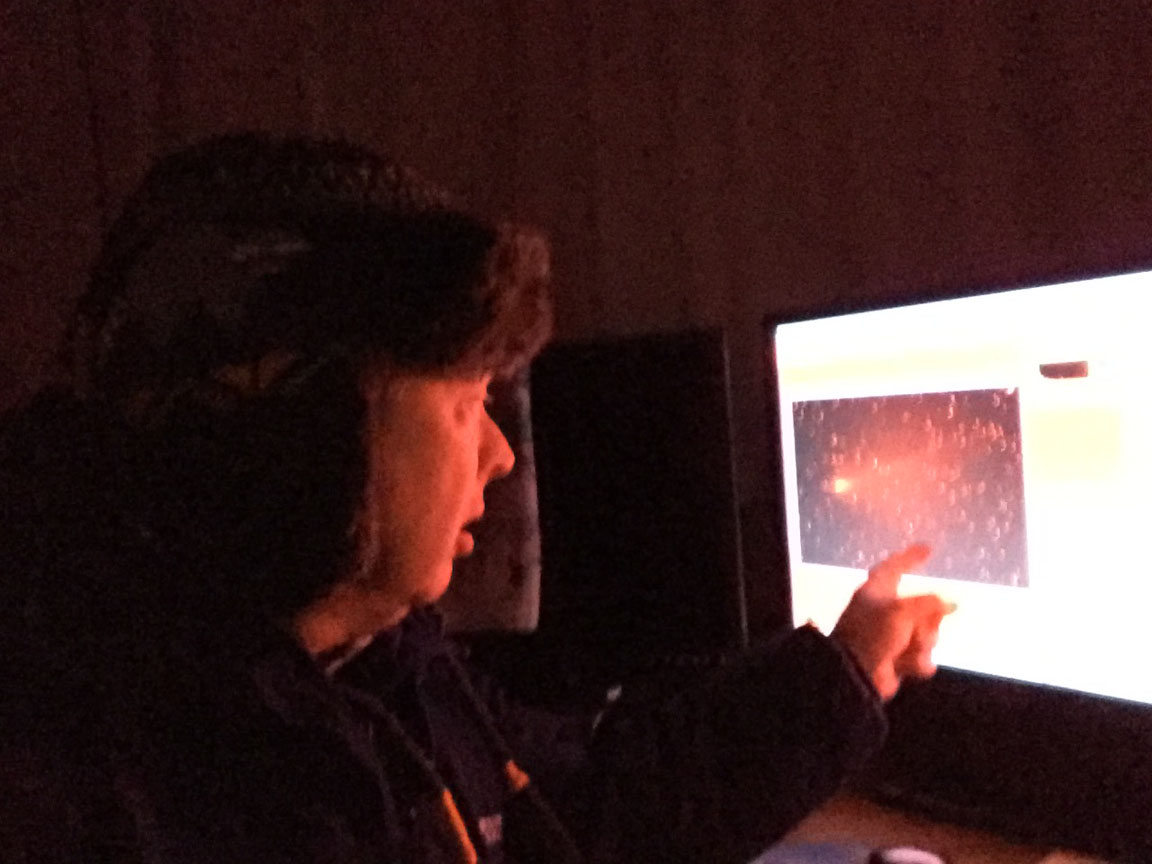
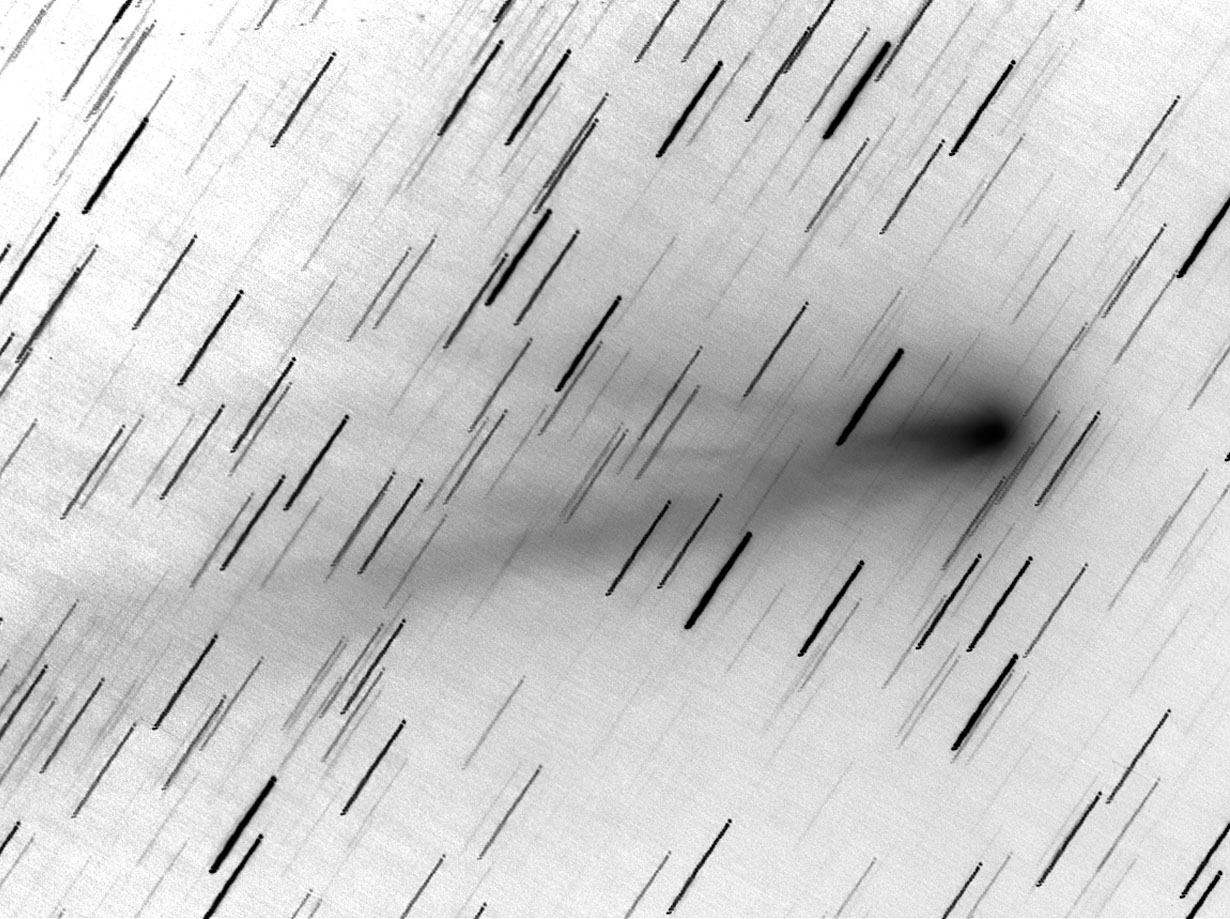
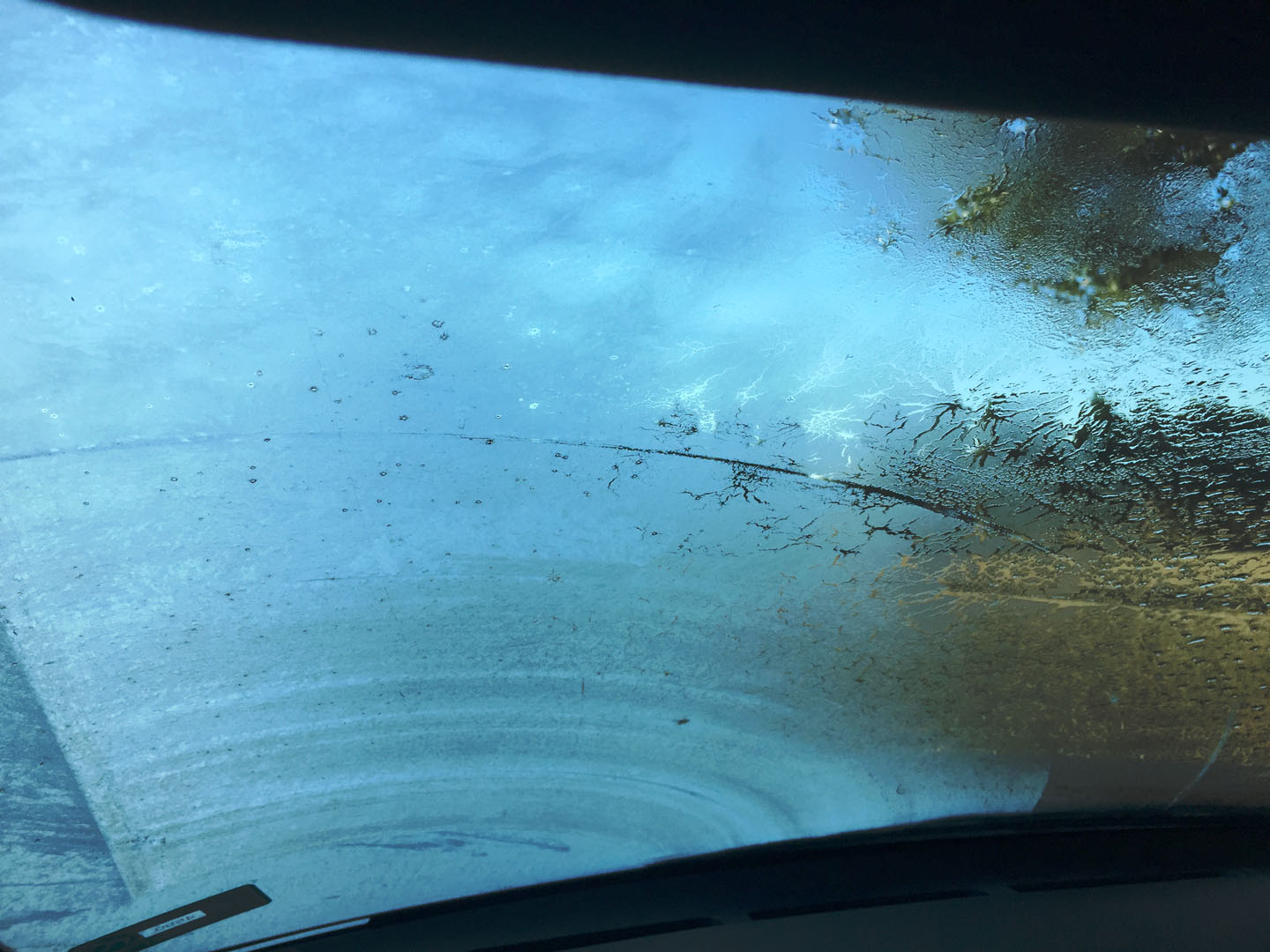

Last weekend, Sandy, Brett and I made a 1-day trek to the Village to prepare the ranch for the upcoming cold spell. What I discovered was a cobalt blue sky and a gorgeous clear cold transparent Saturday night sky! And lots of astronomers downloading photons. Dan Good, Bruce Pipes and John Yecker were action as well as Bill Conrad, Tony Owen and John O’Neill. Barry Riu and Mark Hunt were open for business and John Gurtis and Raul were observing at the field. Never even got the opportunity to see Larry Arbeiter. Seems like quite a few people were talking about a cool new comet, namely C/2016 R2 (PanSTARRS) that will not even reach perihelion until May! Bruce and Barry were familiar but hadn’t yet visited it personally. Raul said the tail visually was extremely faint although some astronomers had recorded violent changes in structure with CCDs in Europe.
Once bitten by the bug to capture this comet, I had to create a makeshift telescope-camera assembly as my Apogee camera was still in Belfast, Ireland. I wanted to use my old SBIG 11K camera on the Vixen refractor for a nice fast system but hadn’t brought the adapters, never planning to image this night. Barry and I agreed he would nail the wide shot with his “comet scope” for a static color image. I decided to use the SBIG 11K on my 14.5-inch RCOS for a close-up monochrome study of the coma and proximal tail for any changes over a 3 hour period from about 9:30PM until 12:30AM January 13-14 intending to create an animation. I took 36 five-minute exposures binned 3×3 over approx. 3 hours totallyunguided on either stars or comet (guide camera came off with the Apogee). Barry and I were on the phone about our game plans when we were both downloading images when we noticed alterations in the tail structure between subframes! Yeh – that is an iPhone selfie! Around 10:30PM, the roundish coma became oblong and material tore off of the bulge and populated the tail which had a sweeping side-to-side motion as if the coma was rotating! The ejected material brightened the tail and whirled around from south to north as the comet trekked northwest at about 1 arcmin per hour. See the attached “RotatingComet” gif animation. Watch the early frames for the elongation of the coma as material is shed into the tail where it brightens and appears to sweep out then whirl around! The animation was produced in Photoshop from 33 subs. An attached TheSky gif shows where the comet was in Taurus and how fast it moved in 3 hours. Used the heater in the warm room as it got well below freezing. It was a glorious night with Winter Milky Way and comet blazing overhead. So much for just a quick visit to check the pipes!
P.S. – Other imagers have created animations which support coma rotation (links below):
http://spaceweathergallery.com/indiv_upload.php?upload_id=142025&PHPSESSID=fdusp304k6km83ne8950rjmu44 — rotating Jellyfish!!
http://www.spaceweather.com/archive.php?view=1&day=18&month=01&year=2018 — scroll down – great anim!